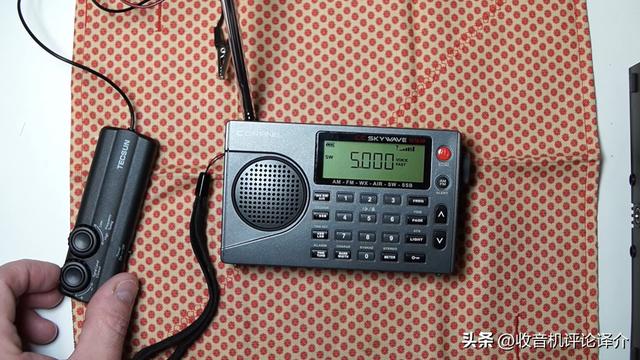新概念英语一册知识点总结(新概念英语一课文梳理与语法知识点总结)
01课文梳理新概念一共144课,其中单课为课文,双课为语法和练习,我来为大家讲解一下关于新概念英语一册知识点总结?跟着小编一起来看一看吧!

新概念英语一册知识点总结
01课文梳理
新概念一共144课,其中单课为课文,双课为语法和练习。
课本中出现的时态:(学习时注意时态的层次和递进性)Lesson 31—34 现在进行时Lesson 37—40 第一次出现be going to 的将来时Lesson 51—56 一般现在时Lesson 67—76 一般过去式Lesson 83—90 现在完成时Lesson 91—96 一般将来时 (will)Lesson 117—118 过去进行时Lesson 119—120 过去完成时
课本中出现的语言点:
Lesson1—2语言点:与陌生人说话或引起别人的注意。
Excuse me. Yes? Pardon? Thank you very much.语法点:主系表结构this为主语,名词做表语的一般疑问句以及它的肯定回答。
Is this your handbag? Yes, it is.
Lesson 5—6语言点:如何介绍别人。
This is Miss Sophie Dupont. Nice to meet you.语法点:主语为第三人称单数的主系表结构。
She is French.
He is German.
It’s a Volvo.(L6)a/an 的使用。
Lesson 7—8语言点:如何自我介绍和相互认识。语法点:主语为第二人称的主系表结构。
Are you French?
特殊疑问句。
What nationality are you?
What’s your job?
Lesson 9—10语言点:朋友或熟识的人之间如何相互问候。How are you?语法点:主系表结构形容词做表语。介词短语表示位置
near the window, on the televion, on the wall
Lesson 29—30语言点:如何发号命令。语法点:祈使句(肯定)。动词与宾语的固定搭配。
Lesson 37—38语言点:如何表达将要做的事情。语法点:现在进行时态be going to do结构表达将要发生的事情。There be 句型的一般疑问句形式。
Lesson 41-42语法点:如何表示不可数名词的量。
Lesson 63-64语言点:建议忠告。语法点:don’t do…. You mustn’t do…
Lesson 65-66语法点:具体时间表示法(半点和刻钟)。反身代词。具体日期表达方式。
Lesson 73-74语言点:问路。语法点:不规则动词的过去式。形容词转变成副词。
Lesson 77-78语言点:看病。语法点:综合时间表达方式。
Lesson 105-106语言点:办公室用语。语法点:want sb to do…./ tell sb to do…以及其否定形式。
Lesson 103-104语言点:考试。语法点:宾语从句。(从句部分为非现在时态)程度副词 too, very ,enough
Lesson 125-126语言点:/语法点:have to do…/ don’t need to do…
Lesson 127-128语言点:娱乐界。语法点:must/can’t 对现在事情的肯定/否定猜测。Lesson 129-130语言点:交通状况。语法点:must/can’t have been….对过去事情的肯定/否定猜测。
Lesson 131-132语言点:度假。语法点:may 对现在/过去事情的肯定或否定猜测。
以下课文的知识慢慢与新二接轨:
现在完成时:Lesson 83—90直接引语变成间接引语:Lesson 99—102形容词的比较级和最高级:Lesson107—112neither ,so 的用法:Lesson 113—114不定代词的用法:Lesson 115—116过去进行和过去完成时:Lesson 117—120定语从句:Lesson 121—124情态动词的综合用法:Lesson 125—132直接引语变间接引语:Lesson 133—136(着重讲时态的倒推)if 的用法:Lesson 137—140被动语态:Lesson 141—144
02语法点总结
need的用法
表示“需要”时为实意动词,后面可以加名词,也可以加不定式:
I need a pen.Do you need any beer? No, I don’t.I need to have a rest.
Need doing=need to bedone (表示被动
The flowers needwatering. =The flowers need to be watered. 花需要浇水。
need在否定时做情态动词使用:
You needn’t go soearly. (=You don’t need to go so early.)
Must I clean the desk right now? No, you needn’t.
不定代词及不定副词
some, any, no, every
-thing: something,anything, nothing, everything
-one: someone, anyone, anything, everyone
-where: somewhere, anywhere, anywhere, everywhere
-body: Somebody, anybody, nobody, everybody
例子:
1)I looked for mybook everywhere, but I can’t find it anywhere.
2)If you want to go somewhere, if you want to be someone, you must wakeup.
3)Help! Somebody? Anybody?
4)You are really something. 你真了不起!(口语中常用 "something"来表示“真像回事儿”,“真行”的意思)
5)Since everybody is here, let’s begin our class.
6)Where did you go? I went nowhere.
7)Nobody is at home.
倒装句:so/neither的倒装
eg: He can swim. Socan I.
She didn't go to class. Neither did I.
结构:
so/neither be 主语
so/neither 助动词 主语
so/neither 情态动词 主语
助动词:
一般现在时: do, does/am, is, are
现在进行时: am, is, are
一般过去时: did
现在完成时: have, has
一般将来时: will, shall
过去进行时: was, were
过去完成时: had
过去将来时: would
副词
副词可以修饰形容词,动词,副词或整个句子。如:
The book is verygood.
He runs fast.
She came here quite early.
Certainly I will go with you.
副词变化形式:
1、直接在形容词后加-ly:
careful-carefully, slow-slowly
2、以辅音字母加y结尾的形容词,把y变i, 加-ly:
happy-happily, lucky-luckily
3、 有些词形容词和副词的形式相同,不需要做任何变化:
fast, hard, late
4、有些词加上-ly后意思与原词相差很远:
neary-nearly, high-highly, late-lately
感叹句:
1、 What 名词 主语 谓语
What a beautiful girlshe is!
What tall buildings they are!
2、 How 形容词 主语 谓语
How beautiful thegirl is!
How tall the buildings are!
3、 在口语中,感叹句的主语和谓语常常省略:
What a nice present!(省略itis)
How disappointed!(省略she is或其它可作本句主、谓的词语)
名词
名词分为可数名词和不可数名词:
1、不可数名词
无法分开的东西:water, tea,bread, milk, rice
抽象的东西:love, beauty, coldness
不可数名词有以下特点:
不能用a, an修饰;
不能加s;
和单数be动词或动词搭配。
2、可数名词
单数可数名词要用冠词修饰,复数可数名词要在名词后面加s。名词复数共有以下几种变化:
规则变化的名词复数形式
规则1 一般情况 se.g. shell→shells book→books
规则2 以s, x, ch,sh结尾 es e.g. fox→foxes church→churches, bus→buses, watch→watches
规则3 以o结尾 s或 ese.g. potato→potatoes, Negro→Negroes, hero→heroes, tomato→tomatoes,(口诀:黑人英雄爱吃土豆和西红柿),剩下一般加s,radio→radios
规则4 以f, fe结尾的,变f,fe为ves e.g. life→lives half→halves, shelf→shelves, city→cities,wife→wives
规则5 以辅音字母 y结尾, 变y为i ese.g. sky→skies fly→flies
不规则变化的名词复数形式
man(men)
woman(women)
foot(feet)
goose(geese)
tooth(teeth)
child(children)
sheep(sheep)
deer(deer)
mouse(mice)
fish(fish)
祈使句
祈使句表示请求、命令、建议、邀请等,谓语动词一律用原型,句子中通常不用主语,句末用惊叹好或者句号,用降调。
肯定句:动词原型
Come here, please.Go downstairs, please.Stand up.Sit down.Be quiet.Be careful.
祈使句中如果有唤语,一定要用逗号隔开,放在句首或者句尾:Come in, Amy.Sit down here, Tom.Mary, give me a book please.
否定:Don't 动词原型
Don't come here.Don't sit down.Don't stand up.Don't give me it.
let sb. do 让某人做
Let me pass.Let us have a rest.Let's have a rest.
反意疑问:Let's have a walk along the river, shall we?Let us go out for a drink, will you?
情态动词的使用
1、情态动词can(能够),must(必须),may(可以)结构:主语 can/must/may 动词原型He can make the tea.Sally can air the room.We can speak English.
变疑问句将情态动词移到句首Can he make the tea?Can Sally air the room?Can we speak English?
变否定句在情态动词后面加notHe cannot make the tea.Sally cannot air the room.We cannot speak English.
肯定回答及否定回答Yes, he can. / No, he cannot.Yes, she can. / No, she cannot.Yes, we can. / No, we cannot.
特殊疑问句:(必背)What can you do?
注意:情态动词的句子没有第三人称单数的变化,不要在情态动词或动词后面加s。
2、must/have to的区别must 表示必须,是主观上觉得应该做,have to是不得不,是由于客观条件逼迫的必要要做must 只能用在表示现在和将来的句子里,而have to do可以用在任何时态
3、must, may, might表示猜测:· must do 表示对现在事实的猜测· must have done表示对过去事实的猜测· must have been doing 表示对过去正在进行的事实的猜测· may/might do, may/might have done表示没有任何事实依据的猜测,might的可能性更小。
4、can't/couldn't 表示不可能
问句
一般疑问句,特殊疑问句,选择疑问句,反意疑问句,选择疑问句,否定疑问句
1、一般疑问句:助动词/be动词 主语Are you a teacher? Do you want to have a cup of tea?
2、特殊疑问句:特殊疑问词 一般疑问句What is your name?
3、 选择疑问句:orDo you want beef or lamb
4、反意疑问句:肯定陈述句 否定疑问部分,否定陈述部分 肯定疑问部分You don't need that pen, do you?
5、否定疑问句:一般疑问句 否定词Aren't you lucky? Don't you want have a rest?
限定词
some, any, many, much
some, any 修饰可数名词或不可数名词,some用于肯定句,any用于否定句和疑问句。注意:当期待对方的答案为肯定回答时用some。
I have some milk.I don't have any milk.May I have some milk
many修饰可数名词,much修饰不可数名词。在口语中表示“很多”一般不用many,much, 而用a lot of, 在否定句中表示“很多”用many, much。
I have a lot ofmoney.I don't have much money.
直接引语/间接引语
如果引语的主句所用动词为过去时,那么间接引语要做相应变化:时态,人称,时间地点及指示词
1、 时态变化:
一般现在时——一般过去时现在进行时——过去进行时一般过去时——过去完成时现在完成时——过去完成时一般将来时——过去将来时
be going to——was/weregoing to/wouldcan--couldmay--might
2、时间地点及指示词的变化:
here-there,tomorrow-the next day, the following day, this-that…
3、 人称变化:根据句意改变人称。
4、 直接宾语/间接宾语
主语+及物动词+间接宾语+直接宾语
直接宾语是及物动词的直接对象,间接宾语是及物动词的动作所涉及的人或事务,也可以说间接宾语表示动作是对谁做的,或者是为谁做的。所以间接宾语要用名词或者宾格代词来担当。
He gives me a book.(me间接宾语,abook直接宾语)
直接宾语和间接宾语的位置调换时要加一个介词to或for:主语+及物动词+直接宾语+介词+间接宾语
Give me a book. =Give the book to me.Send him a letter. = Send a letter to him.Show him the new dress. = Show the new dress to him.
,免责声明:本文仅代表文章作者的个人观点,与本站无关。其原创性、真实性以及文中陈述文字和内容未经本站证实,对本文以及其中全部或者部分内容文字的真实性、完整性和原创性本站不作任何保证或承诺,请读者仅作参考,并自行核实相关内容。文章投诉邮箱:anhduc.ph@yahoo.com






